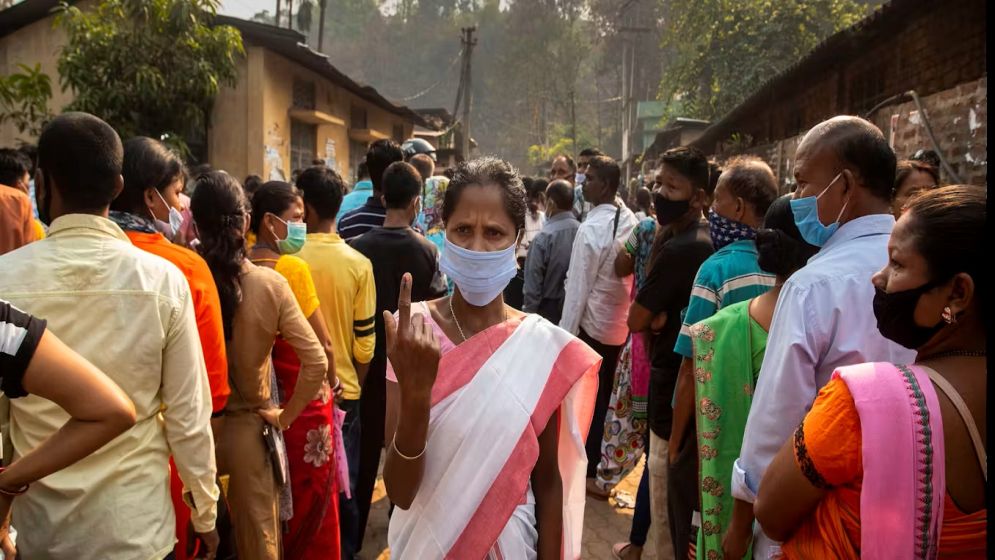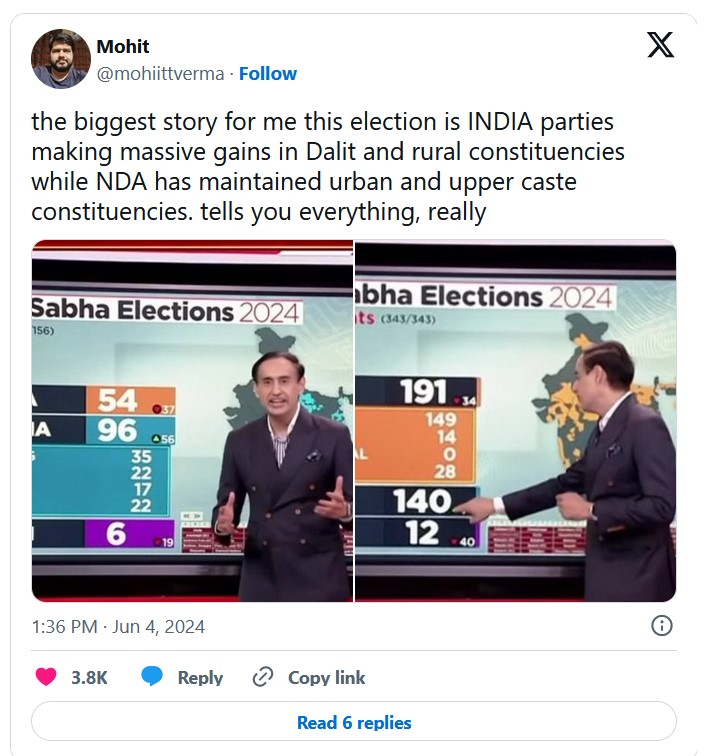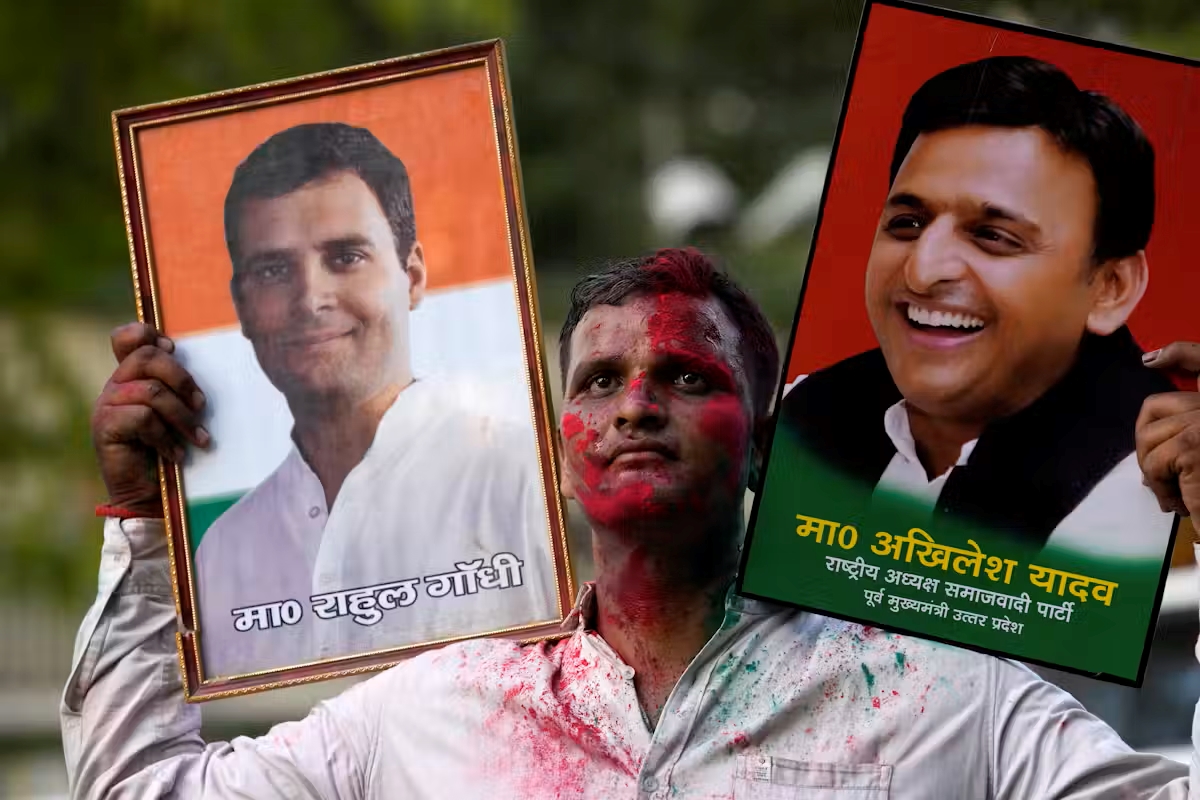One issue proved key to the opposition’s stunning success in India’s election: caste politics
Priya Chacko, Anand Sreekumar
Publish: 08 Jun 2024, 06:30 PM

This year’s general election in India arguably brought up more questions about the fairness of the electoral process than any other in the country’s history.
For example, in December, a bill was passed in India’s parliament that allowed election commissioners to be appointed by a panel dominated by the executive branch, which many feared would endanger free and fair elections.
And during the campaign, Prime Minister Narendra Modi gave a string of speeches that were widely seen as Islamophobic, in which he accused the opposition Congress Party of favouring Muslims. The Election Commission failed to adequately enforce the Model Code of Conduct when it came to these comments.
Opposition chief ministers, Arvind Kejriwal of the Aam Aadmi Party (AAP) and Hemant Soren of Jharkhand Mukti Morcha (JMM), meanwhile, were arrested on charges of corruption. Both parties claimed the charges were politically motivated.
One of the lessons from the election, however, is that even when there are questions about how free and fair a vote is, opposition parties can dent the dominance of ruling parties.
In India’s election, the opposition presented a united front and stuck to a consistent message reflecting specific issues of voter discontent.
Why caste politics were so important
Modi’s Bharatiya Janata Party did not perform as well as expected in the election, suffering major losses in its heartland northern Indian states. Modi began the six-week election campaign saying his party would win more than 400 seats. Ultimately, it was reduced to 240 seats, while the opposition Indian National Developmental Inclusive Alliance (INDIA) won 232 seats.
INDIA had a shaky start to the election. A founding member, the Janata Dal, joined Modi’s coalition earlier this year. INDIA also failed to reach a seat-sharing agreement with another member, Trinamool Congress (TMC), although that party remained part of the alliance.
Yet, as the campaign wore on, the BJP’s attacks on the opposition led to a more united front, focusing particularly on the issue of caste.
Indian society and politics are stratified by its caste system. It has roots in ancient religious texts, which grant symbolic and material rights and privileges to people based on their membership to a particular caste.
Opposition leader Rahul Gandhi’s speeches highlighted a commitment to protecting the Constitution and addressing the issue of caste-based injustice in India. He pledged to undertake a caste census to reveal the extent of disadvantage and concentration of wealth in society.
He also pointed out the government’s centralisation of power, as well as the upper caste-dominated media’s adulation of Modi and its inattention to issues of unemployment and inflation.
Lalu Prasad Yadav, a leader of the Rashtriya Janata Dal (RJD) party, which is also part of the INDIA coalition, warned the BJP intended to change the Constitution to end caste-based affirmative action. Though this was denied by Modi, the allegation seemed to strike a chord with voters.

Caste presented a dilemma for Modi’s Hindu nationalist politics, which valorises upper-caste Hindu practices and behaviours, while relying on support from the lower caste majority to win elections.
The BJP had sought to ameliorate this tension by promoting welfare schemes and accusing the secular opposition of colluding with Muslims to deprive the Hindu lower-caste poor.
In the lead-up to the election, Modi also claimed to have replaced traditional forms of caste stratification with four new castes of welfare “beneficiaries” – women, farmers, the youth and the poor.
In truth, however, the government’s welfare schemes consisted of paltry cash transfers, small loans, food rations and subsidies for private goods like toilets, which sought to compensate for the stagnation of incomes and lack of jobs. Spending on health and education by Modi’s government, which could have transformative effects on society, has languished.
The BJP’s infrastructure-driven economic program has benefited large companies, leading to accusations of crony capitalism. It has also failed to attract substantial foreign investment or grow the manufacturing sector to create more jobs.
Over the past decade – but particularly following the COVID pandemic – India has also become one of the world’s most unequal countries. Women, Dalits, Adivasis and Muslims have fared the worst.
Dalit politicians also grew in prominence
Perhaps the biggest surprise for the BJP were its heavy losses in its heartland state, Uttar Pradesh.
The Samajwadi Party (SP) had previously dominated Uttar Pradesh politics by promoting the interests of particular lower caste “other backward classes”. This tactic, however, generated resentment among other lower castes, which was exploited by the BJP to win power in 2017.
In this election, the SP appears to have fashioned a new, broader caste coalition.

This election also saw new shifts in Dalit politics, the lowest rung of the caste structure in India. In Uttar Pradesh, new Dalit political parties became increasingly prominent, such as the Azad Party led by Chandra Sekhar Azad.
Further south, the Viduthalai Chiruthaigal Katchi (VCK) consolidated its status as the largest Dalit party in Tamil Nadu, winning all the seats it contested.
The future of Indian democracy
Indian democracy is not out of the woods yet. Activists, students, political leaders and journalists remain imprisoned.
The Hindu nationalist movement also has a history of inciting communal violence when things do not go its way in the electoral arena.
The Modi government started to extend its media censorship during the election, as well.
There is little to suggest that Modi will temper what many see as authoritarian tendencies, but there is now more resistance, scepticism and political alternatives that will hopefully aid India’s democratic recovery.
This article was originally published in The Conversation. It is re-published here under creative common license.
